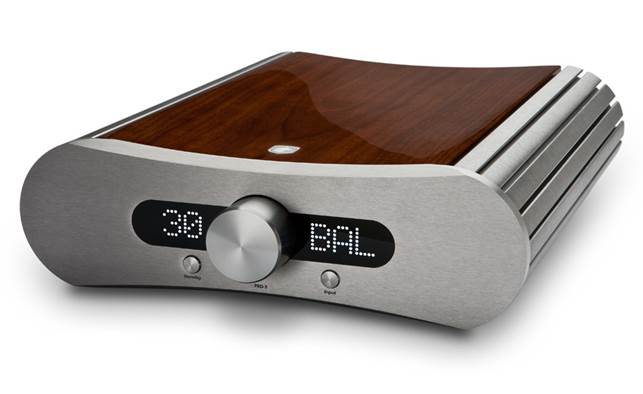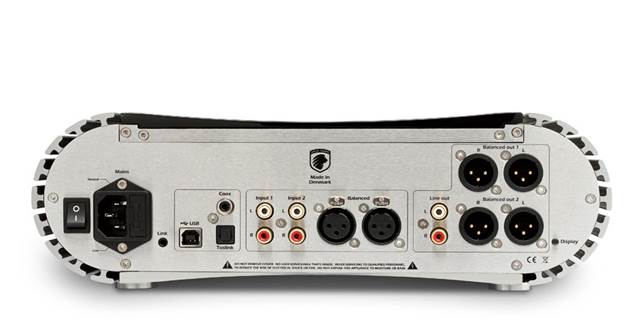Scandinavian design flair and deliciously seductive
sound combine in Gato Audio’s ultra-stylish preamplifier, which looks divine
and has a built-in 192kHz/24-bit USB DAC
With digital entertainment sources ubiquitous in today's
living rooms, many modern DACs include a variable output, obviating the
necessity for a preamplifier if you don't own a turntable, FM tuner or legacy
tape deck. But Gato Audio's strikingly handsome-looking PRD-3 is a proper
system preamplifier, not simply a DAC with a volume control. It includes three
line-level analogue inputs alongside its three digital inputs. If it sounds
anything like as good as it looks, then it promises to be fine value at $3,655!
Fabulous fit and finish
Hailing from Denmark, Gato Audio is a relatively young brand,
the company's product portfolio only recently becoming available in the UK. We
tested Gato's CDD-1 top-loading CD player/DAC together with the MOSFET powered
AMP-150 integrated amplifier last autumn. Priced $8,830 each, they looked a
million dollars and we described them as delivering a harmonious listening
experience, thanks to their relaxed and rather beautiful sound quality.

Gato Audio PRD-3
overview
Gato Audio makes a couple of less expensive Class D
integrated amplifiers which we've yet to audition, the DIA-400 ($6,500) and
DIA-250 ($5,000) that similarly look fabulous in their distinctive casework.
Unlike the AMP-150 they feature built-in 192kHz/24-bit USB DACs as well. The
company hasn't yet announced a power amplifier dressed in its luxurious livery
but I suspect it's only a matter of time, as this PRD-3 preamplifier really
does deserve a matching sibling on a shelf in a system rack.
As well as being distinctively formed, Gato's components
really are fabulously well put together. The fit and finish is first-class;
their 10mm-thick aluminium fronts exude high quality; and the feel of their
controls is equal to some of the finest high-end gear money can buy.
This PRD-3 is also blessed with a lovely white-legend LED
matrix display that's large enough to be read from a distance of several
metres. Output level setting is displayed from 0-99 to the left of the rotary
electronic volume control knob - the numbers rotating vertically in the fashion
of a tumbler in a slot machine - while the selected input is indicated on the
right.

One XLR and two
RCA line inputs are joined by two S/PDIF inputs and a Type B US connection.
There are three outputs and a 12V trigger is provided too
When using a digital input, incoming sampling frequency can
be shown (for four seconds) by pressing that input's direct selector button on
the supplied IR handset. Alternatively the display can be switched via a small
push button on the preamp's rear panel to continuously show sampling frequency
- and only indicate input selection when actually changing inputs. The display
can also be turned on/off via the remote handset.
At the rear there's a balanced (XLR) and two single-ended
(RCA) line inputs all on gold-plated sockets, two S/PDIF inputs (one RCA, one
Toslink) and an asynchronous USB connection for computer audio playback. Of
course, the latter can also be used to feed digital data from an iPad, if you
hook it up using one of Apple's $42 Camera Connection Kit adapters.
Dedicated power
Using the PRD-3 in a bi-amped system would present no
difficulties: there are two sets of output XLRs as well as a pair of
single-ended RCA outputs.
The built-in D-to-A converter, which is driven by a
dedicated power supply separated from the preamp's analogue circuitry, uses a
balanced dual-differential Burr-Brown PCM1794 DAC and sample rate converter,
Gato's designers describing the PRD-3 as featuring ‘an optimized high-bandwidth
I/V converter, very clean internal clock generator for ultra-low jitter in the
digital domain, and an analogue stage with low-Q low pass filters'. Digital
inputs are upsampled to 192kHz/ 24-bit prior to analogue conversion.

Gato Audio PRD-3
on board
The supplied handset is no thing of beauty, its 13
rubberised buttons all identically-sized. Nevertheless it's been thoughtfully
designed, with unambiguous labelling that makes it easy to use. Four buttons in
a diamond cluster at the centre control volume up/down and input scrolling,
while two rows of three buttons provide direct selection of the preamp's
analogue and digital inputs respectively. A separate row of three buttons along
the top of the controller governs standby, display on/ off and mute.
While it's usually going to form the control hub of an
audiophile's two-channel music replay system, the PRD-3's volume control can be
bypassed for integrating with surround sound home cinema set-ups. Activating
(analogue) input No1 and subsequently pressing and holding down the input
selector button on the front panel for four seconds switches the unit into
Direct mode, the number on the left of the display indicating volume level
changing to read ‘HT' (home theatre). Holding down the button again reverts the
PRD-3 to normal operation.